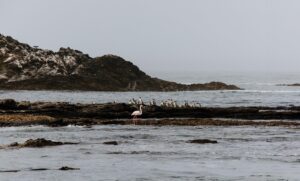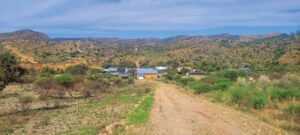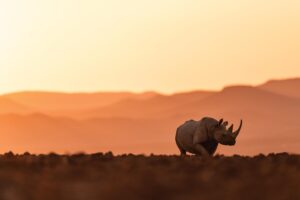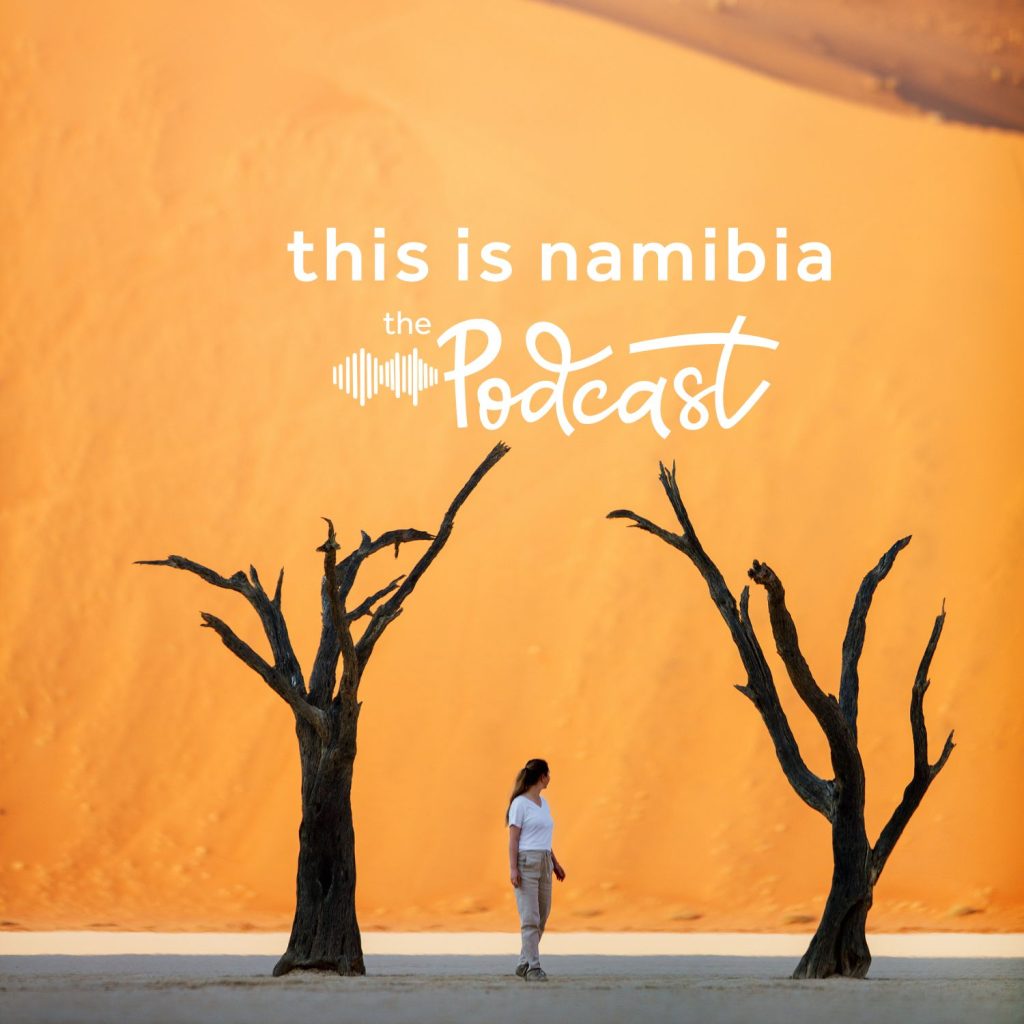

Eyes of the Wild
When I close my eyes, I am transported back to a moment so profound, it feels as if it will remain etched in my soul forever. In that moment, I lose myself in a gaze. Eyes pierce right through me, stirring something deep within. Their markings are striking, yet blend seamlessly into the environment, as if they are part of the very air around them. And then, there is their unexpected playfulness.
Text Kirsty Watermeyer | Photographs Kirsty Watermeyer
From the ITB 2025 issue
I have always had a deep love and fascination for leopards. I remember watching a documentary years ago that highlighted their incredible hunting abilities, their ferocity and their reclusive nature. How could I know anything different? Who gets the chance to spend time with a leopard in the wild? Very few. For most people, the fleeting sight of a leopard is such a rare occurrence that it would be forever marked as a moment of great significance.
Like most people, my knowledge of leopards was limited to folklore and imagination, until I had the chance to join a leopard tracking experience at Okonjima Nature Reserve. Spanning 20,000 hectares, the reserve is home to around 35 leopards, 18 of which are fitted with tracking collars. These trackers do not provide exact locations but only a general direction, meaning a sighting is never guaranteed. Leopards are incredibly stealthy and rarely allow themselves to be seen.
One crisp morning, we departed from the lodge under the guidance of Martin, the head guide at Okonjima. With twelve years of experience here, he has a deep understanding of – and respect for – the leopards that call this beautiful place home. After a short drive, we begin to pick up beeps from the tracking collars. We scour the ground but see nothing. We push on, searching deeper and deeper. Jittery animals tell us we must be on the right track – surely, a leopard is close. Or is it? Just as I am about to give up, something catches my eye; something so exquisite, my brain takes a moment to realise it’s a leopard!
Martin tells us that she is a female, and that she has a ten- month-old male cub who is obviously somewhere else. After a brief assessment of her behaviour, he deduces that she is not hunting – she is marking her territory.
Careful not to disturb her, Martin keeps his distance, turning off the engine whenever she pauses, allowing us to simply observe. She sniffs at branches, inspects the land, rubs against trees, rolls in the sand and continues her morning routine.
The precious time spent with her is the most incredible experience. I feel as though I am walking in the footsteps of David Attenborough, almost hearing his voice narrating the moment: “Such beautiful movement is rarely seen. Dance in the animal world is little understood.”
We spend an unbelievable amount of time watching the leopard’s every movement – so much so that I almost start to relax into the moment, as though spending time with a leopard in the wild is a normal, natural thing. But it is almost time to head back to the lodge for breakfast. Martin asks if we can move on, as he wants to take us around the mountain on the return drive. We take one last feast for the eyes before heading towards the higher ground, completely unaware of what awaits us.
As we reach the viewing spot atop the mountain, we are all taken by surprise. There, enjoying the very view we had come to see, is the female’s cub. Uncollared and entirely unfazed, he appears as relaxed as anyone could hope for when encountering a leopard.
We were so unaware of him when we arrived that our car stopped right next to him, but he did not flinch. There he lies, locking eyes with me, then turning his head a few times, almost as if posing for my camera. A yawn, a wink, a pose… And then, leisurely, he gets up and moves a little closer. He sits down again, a hair’s breadth from the vehicle, and simply stays there, looking at me. It is as though he is talking to my soul, stirring something deep and spiritual that will linger within me for many moons to come.
Although only ten months old, this cub is already as big as his mother and destined to become a formidable leopard one day. For now, he is content to show off his flawless markings and curious nature. After inspecting us closely, he moves to the edge of the mountain, turns around, and flops down onto the red rocks, presenting the perfect photo opportunity.
Once he has had his fill of our attention, he gets up and begins making his way down the other side of the mountain. We follow him along the road, and park to watch him jump from rock to rock, stopping a few times to strike a few more stunning poses before disappearing from view. We are filled with a mix of adrenaline, reverence, excitement and awe as we head back to the lodge – as though we are returning to earth from some otherworldly experience. It was such a magical moment that, upon our arrival at camp, I immediately signed up to do it all again the next morning.
Before the next experience, I got the chance to speak to Karen Codling, the director of the AfriCat Foundation, about the research being conducted at Okonjima. She explains that their research focuses on understanding the long-term behaviours of the animals here. “We’re fortunate to have close access to species like leopards, which allows us to observe their social dynamics in unique ways. For example, we’re seeing that leopards interact with each other more than we originally thought, even sharing prey about a third of the time. We’ve also seen surprising familial behaviours, like male leopards continuing to interact with their grown sons,” she says.

“Our primary focus is on leopards, pangolins and brown hyenas. The brown hyena remains an enigma – we’re just beginning to study them. It’s fascinating how much we don’t know until we start looking.”
Karen continues, “Being able to observe these animals in their natural habitat is a huge privilege. Leopards, pangolins and hyenas are all nocturnal, shy and solitary creatures. To be allowed into their space, to truly understand them, is something we must never take lightly.”
“Our research is about answering questions that others can’t”, she adds. “We are able to observe these animals in ways that aren’t possible elsewhere, and that has drawn international researchers to us. They come with questions they have not been able to answer, and through collaboration, we’re able to add valuable insights.”
“Leopards, in particular, have surprised us. There’s so much in the literature that says they don’t do certain things, yet we’ve observed them doing exactly the opposite. It challenges what we thought we knew. We’re not just collecting data – we’re questioning assumptions and exploring new possibilities.”
The next morning, Martin takes us out again, this time to another part of the vast reserve, a different territory and, hopefully, another leopard. It is not long before we spot a dominant male, fresh from a successful hunt. Our eyes follow the drag marks in the sand, leading us to where he lounges lazily beneath a thicket. After watching him for a while, we decide to leave him in peace.
Next, we track the signal of another leopard, following the beeps as we drive deeper into thick bush. But despite our best efforts, the signal leads us nowhere. We comb the area again and again, but the elusive cat remains hidden. Eventually, the search gets abandoned. A humbling reminder that a sighting is never guaranteed, it is a gift.
We were hoping for just one more sighting, and Martin was eager to try again. We set off in a new direction, toward another leopard’s territory, hoping for better luck. This time we were rewarded. A mother and her one-year-old cubs – a male and a female – were on the move, searching for a new resting spot.
We followed them as they moved along the riverbank. What unfolded before us was incredible – an opportunity to see firsthand how playful leopards actually are. The cubs pounced and taunted each other with infectious energy. Then, in a rare moment of tenderness, when the vegetation thinned and they became more exposed, the young male cub would walk alongside his mother, gently wrapping his tail around her body in an affectionate gesture – almost like a tail hug.
It was in this moment that a new understanding began to unfold. I had always been drawn to leopards, fascinated by their strength, beauty and elusive nature. They were among my most treasured sightings, admired for their power and sought after on every game drive. But now I saw them in a new light. Beyond their might and grace, leopards are playful, fun-loving creatures, capable of surprising tenderness. Social yet solitary, enigmatic and misunderstood but magical and mythical in every sense. TN
More to explore

Discover Airlines launches a new direct flight between Windhoek and Munich







